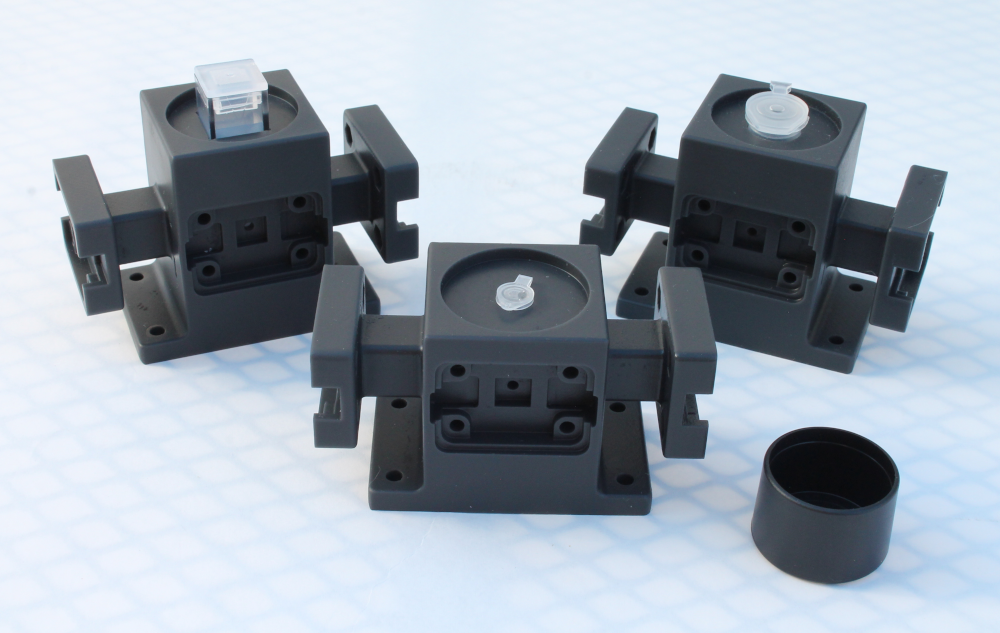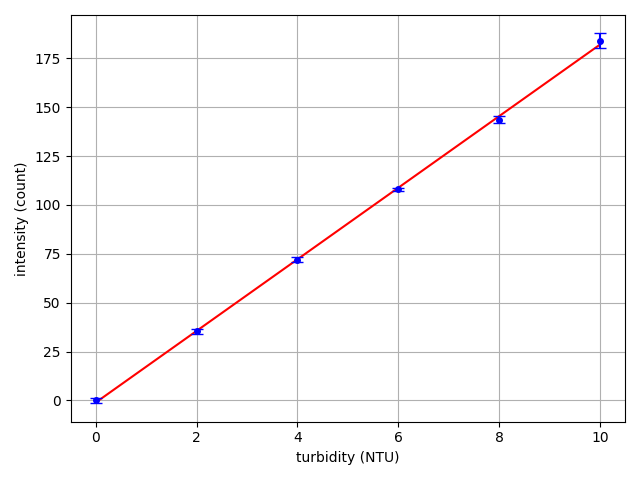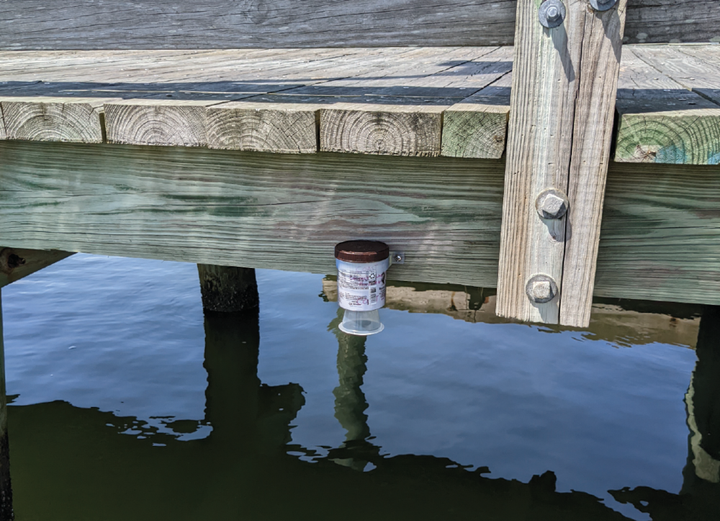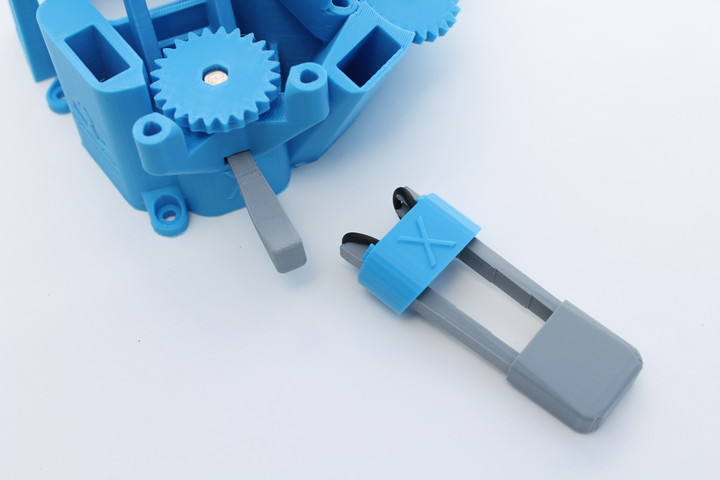Update on developing a turbidity test with the Open Colorimeter

This is a continuation of our documentation on developing a turbidity test for the Open Colorimeter. Check out part one below for more background on this project!

Background
Water cloudiness or turbidity is commonly measured by the amount of light-scattering by samples. Water quality measurements are often expressed in NTUs (Nephelometric Turbidity Units). To measure light-scattering by a sample, the light measuring sensor needs to be oriented at a right-angle (R/A) to the emitting light source (LED). The Open Colorimeter can easily be modified to measure light-scattering (or fluoresence) by changing the sample holder to a R/A version.
In our previous post, we described measuring turbidity (light-scattering) with the Open Colorimeter and a new right angle (R/A) cuvette holder design. The next steps were to make a couple of changes to improve the design, primarily to increase device sensitivity to measure low range turbidity & to add a second light sensor.
Design changes made to R/A cuvette holder
- The biggest change we made was to move the light-sensor closer to the sample. This design change was made to increase signal detection and allow for measurements in low turbidity ranges
- We added a black acrylic sensor cover to improve light tightness and decrease background light detection
- We also added a second sensor mount directly across from the LED mount. This light sensor will be used to measure LED intensity so we add a calibration step to normalize for differences in LED intensity. This has not been implemented yet but we will be testing this soon!
- In addition to the cuvette holder we also added two new designs for sample measurements with a 0.5 mL or 1.5 mL microcentrifuge tube. These will mostly be used for fluorometry testing
Below are some images of the 3D-printed parts with the new ver2 design changes


Modifying the Open Colorimeter for turbidity measurements
The only hardware change needed to convert the Open Colorimeter to measuring turbidity by light-scattering is to swap out the standard absorbance cuvette holder on the Open Colorimeter with the new R/A version 2 cuvette holder. The same electronics and mounting hardware are used, the only difference is where the sensor is mounted relative to the LED board. The image below shows the final assembled version.
- Sensor: This is same sensor that is used with the Open Colorimeter. The sensor is mounted into the recessed sensor mount along with a laser-cut black acrylic cover to reduce background light
- LED: For light-scattering experiments, we are using the Open Colorimeter default white LED
- Firmware: The Open Colorimeter was re-programmed with custom turbidity firmware.

Turbidity Measurements
The expected turbidity levels will vary depending on the samples being measured. We shared some expected NTU ranges in water samples in part one of this development project. For this reason, we wanted to test the device over a broad turbidity range. We prepared three turbidity calibration ranges using a commercial 1,000 NTU standard (Hach Cat # 2660649). Distilled water was used for all dilutions.
- High Range: 0-1000 NTU
- Mid Range: 0-100 NTU
- Low Range: 0-10 NTU (e.g. drinking water, typical groundwater)
For each sample, we measured light intensity and plotted data versus NTU concentration. Data shown below is the average and standard deviation from 3 separate trials.



Summary
- Similar to the previous test, we observed a non-linear relationship between light scattering and turbidity in the high-range (0-1000 NTU). In this turbidity range we can use a polynomial fit to calibrate the instrument to measure turbidity. Additionally, we found an approximate 2-fold increase in the amount of light-scattering detected
- Additionally, we observed a linear relationship between light scattering and turbidity when measuring in the mid-range (0-100 NTU), which confirmed our previous tests. In this turbidity range we can use a linear fit to calibrate the instrument to measure turbidity. We also saw a similar 2-fold increase in sensitivity
- NEW: With the increased sensitivity from the ver2 cuvette holder, we are now able to measure turbidity in a lower-range. As mentioned in our previous post, most water quality measurements will be in this range so it is important to be able to measure low-range turbidity levels. As shown in the last graph, we also observed a linear relationship from 0-10 NTUs, which is very promising for water quality tests.






Comments ()